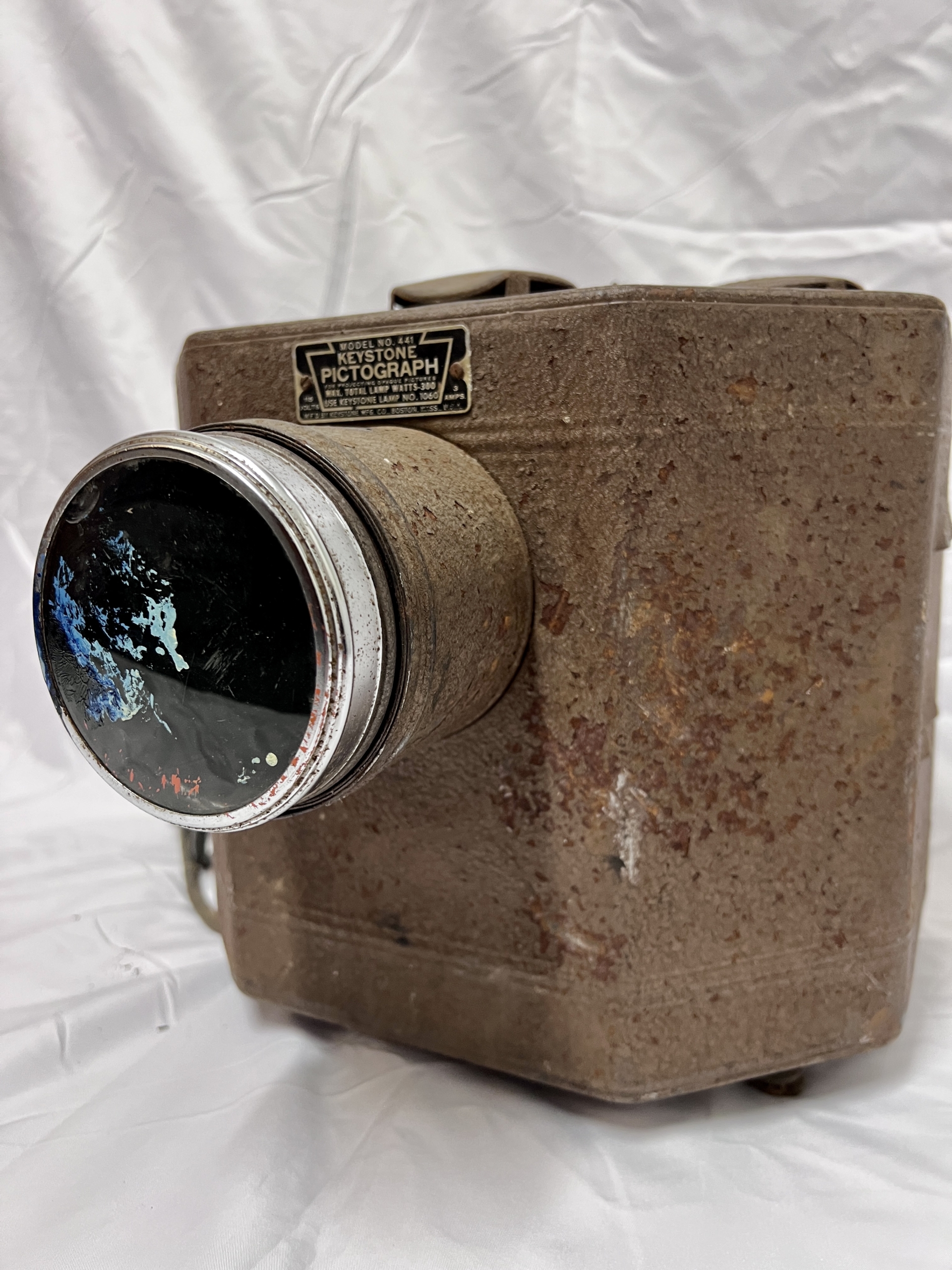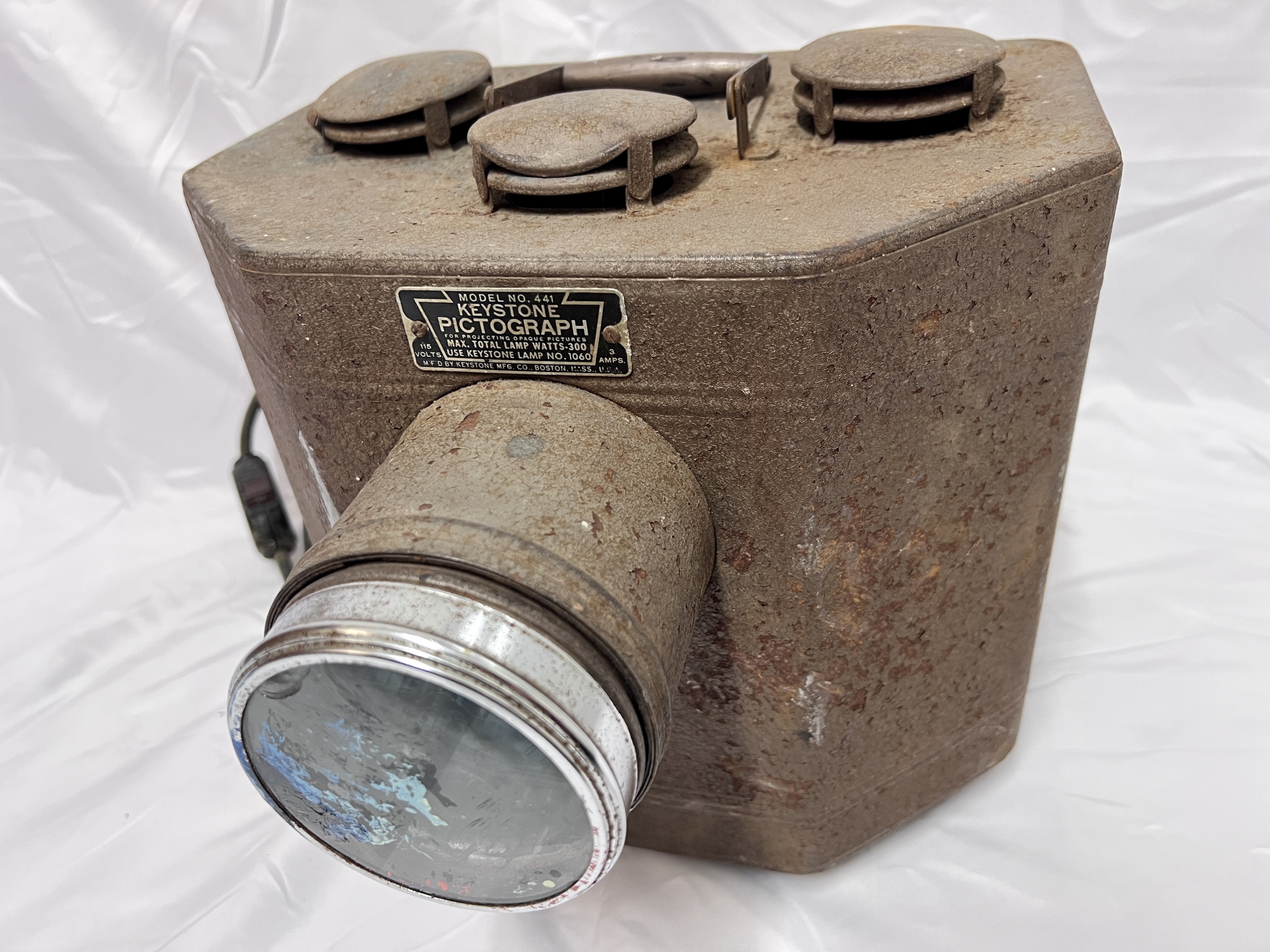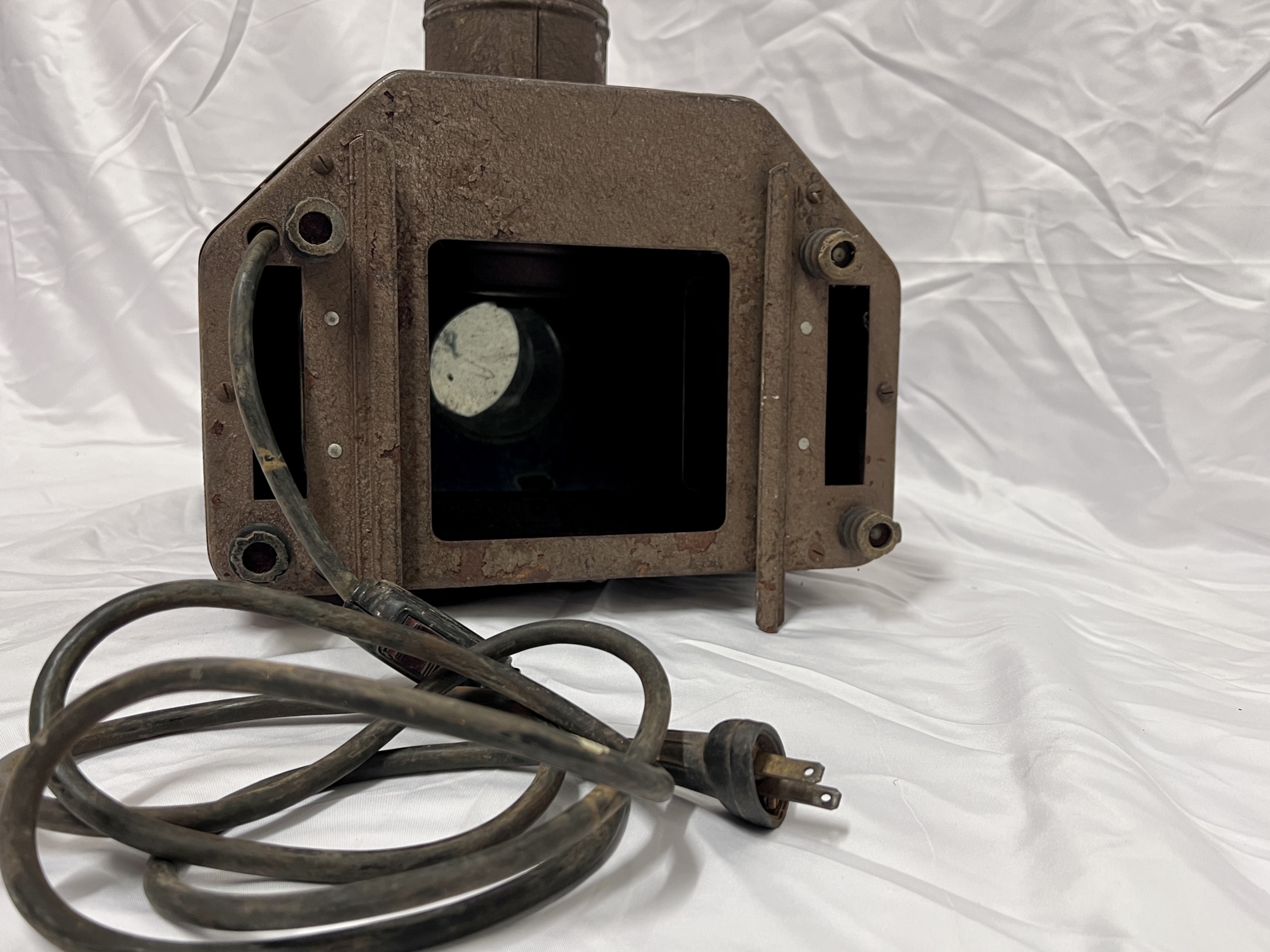Keystone Pictograph Projector
Circa 1935 Keystone Pictograph Projector, Model No. 441, used to project enlargements of drawings onto billboards, showcards and other sign types.
Circa 1935 Keystone Pictograph Projector, Model No. 441, used to project enlargements of drawings onto billboards, showcards and other sign types.
Circa 1935 Keystone Pictograph Projector, Model No. 441
This pictograph was used to project enlargements of drawings, opaque photos, postcards, Polaroids Land prints (which can be projected on a screen 3 x 4), reading material, etc. It uses two bulbs and a combination of three interior mirrors to illuminate, optically reflect and project. It has three heat vents on top and 4 on its back, along with with a bake-lite carrying handle. The tubular-shaped bulbs light up, and the carrier is adjustable for various sizes of material to be projected. It was manufactured in Boston, Massachusetts, by Keystone Camera Company and costs $16.50 in 1939, the equivalent of about $370 today.
Keystone Camera Company was established in c1919 in Boston, Massachusetts’. An American manufacture of consumer photographic equipment, tt was known for making movie cameras and cartridge cameras with built in electronic flash. In the 1930’s, they made inexpensive 16mm cameras that are still used today. During WWII they also created an aerial camera. In 1966, they were acquired by Berkey Photo, Inc. and later in 1991, the Company filed for chapter 11 protection while simultaneously purchased by Concord Camera Company for $6.6 million. It was during this period they entered into the disposable, “single use” camera market.
Good: there is a significant amount of rust occurring all across the body of the object; the rust appears to be underneath and through the objects original finish; the projector does turn on and the lightbulb connections work. The object is stable resting on its four legs.
There are small spots of total finish erosion, with aluminum showing through.




